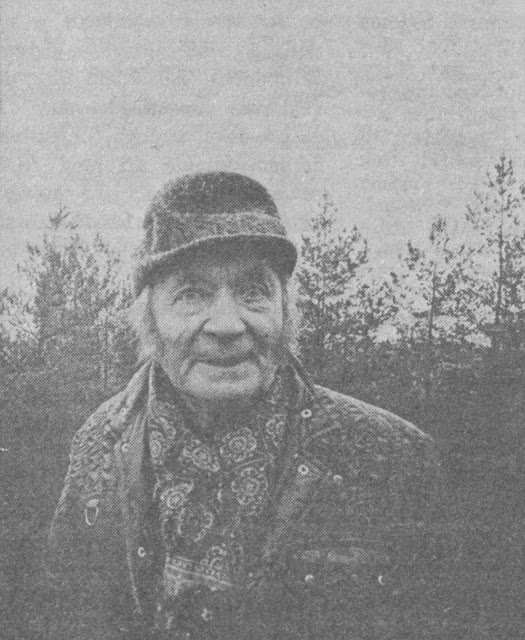FATHER FOREST. One man's work to creating Riga's most beautiful woods.
In the largest neighbourhood of Riga, there is the largest forest in the city. Little do we know it's been planted manually for decades after WWII on bare, naked, drifting dunes only due to one man's life-long perseverance. Welcome to the most scenic nature spot to visit this spring - Kleisti forest, and its warm-hearted father, ranger Pēteris Kupšs.
 |
| Pēteris in 1990 (Rīgas Balss; photo by Raimo Lielbriedis). |
For Rigans before Pēteris' time, Kleisti and its Buļļu dune was known as a drifting sandy, hilly area (sometimes called "Baltie kalni" or the White hills). They were once owned by the Kleisti manor when it was first established in 1638, but only the southern part of the suburb were of any economical use. During WWI, crucial liberation battles took place within the Buļļu dune neighbourhood; hence the name of one of its humble peaks - Bumbukalniņš a.k.a. the Bomb hill (where a fire tower viewing platform stands now). Apart from that, Kleisti maintained to be the extreme periphery of Riga as for centuries before.
Only after WWII, the idea of Kleisti natural landscape becoming a space for relaxation in nature was born. At first, walks in forests would only take place in the southern Kleisti where several recreational and educational buildings were also build during the socialistic period (e.g., a base for equestrian sports and pentathlon). The "construction of Soviet Union" would define housing the only way for the area to "properly" go toward the "healthy neigbourhood" name.
What made the northern, barren, sandy part a new representation for the pleasures of being in true nature? Basically, the work of Pēteris Kupšs (sometimes as Kupšis). Born in 1906 in the far west of Latvia, Nīca vicinity, he worked as a carpenter at first in a factory in Liepāja. Soon his work indoors proved to be unsatisfactory, and Pēteris fell ill with Rheumatism. He then decided to rather graduate with a technical college degree in forest sciences and started working at Kleisti in 1935 - 200 km away from home, a large distance in those times.
Since then, for more than 50(!) years, every single tree growing in this vast forest has been germinated and either planted or orchestrated by our "forest master", Pēteris Kupšs. He also worked on his own garden that, at times, reached whooping 10 000 saplings (helped by Ērika Šmite). He raised a son to follow his steps in forest sciences. During WWII, he even managed to save 3 Jewish people in his hayloft in 1944. On this, Pēteris' only comment was: "It's not the national affiliation that is important, it's the ability to feel pity for someone in hard times."
Nevertheless, the crusade against the shifting dunes would prove to be hard. The conditions were punishing to trees - windy and open grounds, sandy and barren soil, pungent smell and air coming from the often burning, now former city dumpster nearby. The latter was accompanied by individual polluters secretly ditching their construction and demolition waste after the dumpster was eventually closed some time around 1974. Even the legal and also illegal sand extraction would degrade both the landscape and environment.
To increase the pace of regeneration, Pēteris asked around the nearby Bolderāja high school No. 19 - would it be possible to get some help from teenagers? It was 1970, and as much as we know, the planting brigades from middle school arrived in Kleisti for the next 20 springs to plant 5 - 6 hectares annually with two-year-old pines. In result, around a third of all 300 hectares by 1990 at least would grow well because of pupils.
 |
| Pēteris Kupšs, around the time when beginning his work with children (Rīgas Balss, 1971; Image by Valters Reigass). |
Pēteris believed that, when involving kids in tree planting and making them being a part of something big, would later serve as a morality check. The young grown-ups would later spare city parks or decorative schrubs, quit polluting and stop illegal hunting of animals in city forests (one of teachers bringing kids every spring, Inese Šteinberga, herself grew up as one of the ranger's helpers).
As we see now, the Kleisti forest is indeed almost wiped out of trash, however there's always something to do for diligent ploggers. The only downside are the spare tires that pile up by its main road and serve as a reminder of the human stupidity and ignorance. Some people are born to keep the Earth a better place for others that make it worse.
When checking out the Wikipedia of Kleisti and other written information, one can find texts, praising the complex of the late Kleisti manor or some medical and sports facilities. But we, at CAPITAL R, think the Buļļu dune forest, as planted by Pēteris Kupšs, is the first and foremost "object" to visit in this suburb.
In these strange covid times, the Kleisti forests will prove to be one of the most magnificent places to reload oneself and safely distance from everybody even if the whole city decided to have a saunter among the trees planted by Pēteris Kupšs. For that, visit the Bumbukalniņš tower, then follow the road along Apakšgrāvja iela until seeing a memorial stone to Pēteris and his work.
Then, you have arrived at your destination.


Comments
Post a Comment